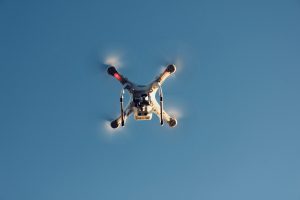Table of Contents
Introduction
Suppose you have a quadcopter or have just purchased one newly for your recreational or experimental purpose. Then you would want to continue to read this to know how high your quadcopter can fly.
What is a Quadcopter
A quadcopter is a type of drone that runs on only four motors. Often referred to as a type of helicopter because of its four motors. The use of a quadcopter varies, from personal to professional purposes.
How high can a quadcopter fly
Many people think that you could fly it to any height when they have a drone. However, this is not the case, as you don’t just fly a drone to any height because many factors would determine how high it would be possible to fly. Having that in mind, most drones have built-in measures that prevent them from flying high above a certain altitude in the air. To learn more about how high drones fly, you can read How High Can a Drone Fly
Technology has made it possible for a drone to fly up to 10,000 feet high, so nothing stops your drone from going above 400-feet except the rules and regulations of altitude for drones.
Legally, a drone cannot exceed a certain altitude in other to prevent a possible clash with other aviation flights. A drone in the United States of America cannot fly above the 400 feet maximum feet. So, if you reside in the United States of America, you would be bound by rules and regulation of the region that prevents you from flying above 400 feet, and in Europe, you would be required not to fly above the maximum required height of 500ft by law. All of these figures are maximum altitudes relative to your take-off altitude and not relative to sea level.
The basis for the 400-feet law in the United States of America is because operated aircraft activities occur at 500 feet and above except the controlled airspace near airports. This 100-feet difference was established to avoid any close encounters between drones and crewed aircraft—the reference point from which the 400 feet altitude is measured varies. According to law, when flying within a structure’s vicinity, you can move higher the 400 feet maximum altitude. The basis for this reasoning is that human-crewed aircraft would also need to go higher when passing over larger structures; a plane flying at 500 feet would gain altitude when passing over a large structure or building. As was said earlier, this 400-feet maximum altitude is on ground level alone.
Uses of a Quadcopter
The uses of quadcopters are enormous and diverse. A quadcopter can be useful for many activities that would require a view from the aerial position, for instance, in videography and photography. A quadcopter is used to capture videos and images from an aerial angle. Sometimes, without a quadcopter to help take those specific kinds of shots, it won’t be possible to get them. For your photography needs, you can check out best selfie drones
A quadcopter can also be used when taking a map and survey of a geographical area. With the drone’s help, aerial images and patterns are taken, which the geographer interprets or presents. In agriculture, quadcopters are used to help spray the needed chemicals that help the plants fight pests. Instead of manually spraying the chemical in your agricultural farm row after row, using the quadcopter saves you a lot of time and stress; it covers a large space area when sprayed from the aerial position.
Apart from the quadcopter’s usual known uses, it has a broad use for different situations and purposes. Some online commerce stores are beginning to explore a quadcopter for product delivery; this shows that our imagination only limits the use of a quadcopter and what it can help us achieve. If you are using your quadcopter to lift things, you can check out this post How Much Weight Can a Drone Carry
Conclusion
Now that you know how high your quadcopter can fly, you can now plan and fly safely at a reasonable altitude without breaking the law or be in danger of crashing with a crewed aircraft. With this knowledge, you would know how high your quadcopter can fly, both for recreational or professional purposes.

